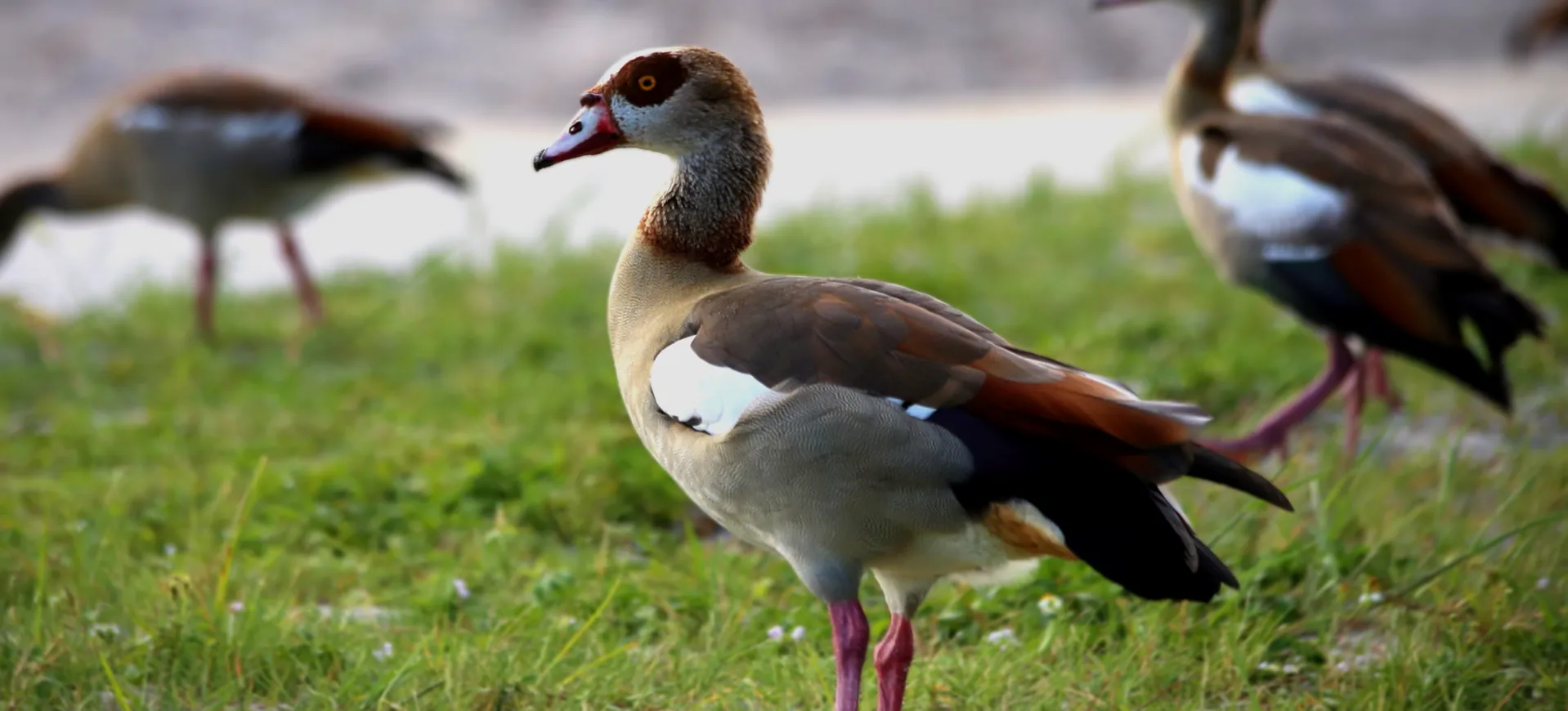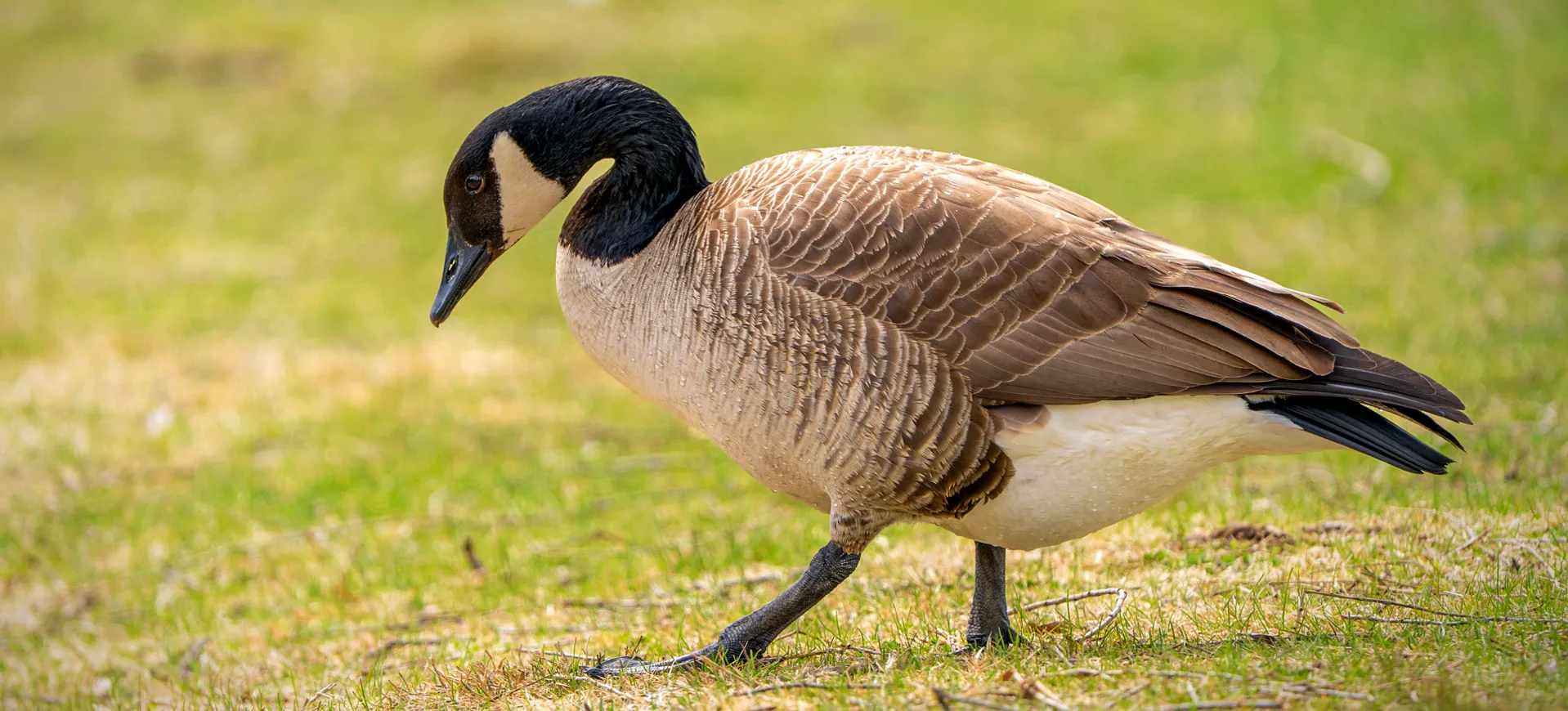Overview
The Eurasian Wigeon (Mareca penelope), also known simply as the Wigeon, is a widespread and commonly found dabbling duck in northern Europe and Asia. This medium-sized bird is known for its distinctive whistling call and striking breeding plumage in males, featuring a chestnut head with a broad cream-colored forehead and crown, a pink breast, and a gray body. Females and non-breeding males are more subdued, with mottled brown plumage that provides excellent camouflage in their marshy habitats.
Eurasian Wigeons are highly gregarious outside the breeding season, forming large flocks on coastal bays, wetlands, and estuaries. They are migratory birds, spending the summer in northern areas for breeding and then moving to warmer regions in the winter. Their diet is quite varied, consisting of aquatic plants, grasses, and, occasionally, small aquatic animals. The species plays a significant role in its ecosystem, acting as a seed disperser for the vegetation it consumes.
Despite facing threats from habitat loss and hunting in some areas, the Eurasian Wigeon has a large range and population and is not currently considered globally threatened. However, conservation efforts are vital to ensure that wetland habitats are preserved and managed sustainably, maintaining healthy populations of this and other waterfowl species.
Taxonomy
Kingdom
Phylum
Class
Order
Family
Genus
Species
Type
Physical Description:
Eurasian Wigeons are medium-sized ducks with a round head and short bills. The breeding male is particularly striking, with a chestnut-red head, creamy yellow forehead, and crown. The body is primarily gray with a pinkish breast and black and white patterning on the back. The female and non-breeding male are more muted in color, with mottled brown plumage that provides camouflage among reeds and vegetation.
Both sexes display a conspicuous white wing patch in flight, a key identification feature. The bill is bluish-gray with a black tip, and the legs and feet are gray. Eurasian Wigeons are known for their agility in the water and air, dabbling for food at the surface and taking flight with rapid wingbeats.

Lifespan: Wild: ~20 Years || Captivity: ~25 Years

Weight: Male & Female: 1.1-2.2 lbs (500-1,000 g)

Length: Male & Female: 17-20 inches (42-50 cm)

Wingspan: Male & Female: 30-35 inches (76-89 cm)
Characteristic:
Native Habitat:
Eurasian Wigeons breed in the northernmost parts of Europe and Asia, including Scandinavia, Russia, and northern parts of the United Kingdom. Their breeding habitat consists of abundant vegetation in shallow freshwater wetlands, lakes, and marshes. The surrounding grasslands and fields also provide important feeding grounds.
In winter, they migrate south to milder coastal regions, estuaries, and wetlands across Europe and Asia. These wintering grounds provide abundant food and shelter, crucial for the birds’ survival during the colder months. The habitats they choose are typically rich in aquatic vegetation and offer protection from predators and harsh weather.
Climate Zones:
Biomes:
Biogeographical Realms:
Continents:
Countries:
Diet:
Diet & Feeding Habits:
Eurasian Wigeons are primarily herbivores, feeding on various aquatic plants, grasses, and occasionally grains from agricultural fields. They are known for their “grazing” behavior, often feeding on land near the water’s edge. In the water, they dabble at the surface rather than dive, reaching for vegetation with their short bill.
During the winter, they often form mixed-species flocks with other dabbling ducks and may feed in large groups on coastal marshes and estuaries. Their diet can also include small aquatic insects and invertebrates, especially during the breeding season when additional protein is beneficial. The feeding behavior of Eurasian Wigeons plays a crucial role in the dispersal and germination of aquatic plants, contributing to the health of wetland ecosystems.
Mating Behavior:
Mating Description:
Eurasian Wigeons are monogamous during the breeding season, forming pairs that stay together to raise their young. Courtship involves a series of displays, vocalizations, and head-bobbing by the male to attract a female. Nesting usually occurs on the ground, hidden among dense vegetation near the water. The female builds a shallow nest, lining it with grass and down feathers.
The female lays a clutch of 6-9 eggs and incubates them for about 25 days. During this time, the male stays nearby but does not participate in incubation. Once the ducklings hatch, they are precocial and leave the nest within a day or two. The female leads them to water, where they begin feeding themselves, although she continues to provide protection and guidance. The male often leaves before the ducklings hatch, joining other males to molt.
Reproduction Season:
Birth Type:
Pregnancy Duration:
Female Name:
Male Name:
Baby Name:
Social Structure Description:
Eurasian Wigeons are highly social birds, especially outside the breeding season. They form large flocks, often mixed with other species of ducks, providing safety in numbers from predators. During the breeding season, they become more territorial, with pairs defending their nesting area. Communication is important in their social structure, with various vocalizations used to maintain group cohesion and warn of danger.
Eurasian wigeons often gather large numbers on wintering grounds in coastal estuaries and wetlands, where they can be seen feeding and resting together. Understanding their social behavior is important for managing their habitats effectively, ensuring they have the space and resources needed for feeding, breeding, and raising young.
Groups:
Conservation Status:
Population Trend:
The Eurasian Wigeon has a large and stable population across its wide range. While the species is not currently considered globally threatened, local populations may face pressures from habitat loss, pollution, and hunting. Wetland conservation and management are crucial for maintaining healthy populations and ensuring these birds access suitable breeding and wintering sites.
Ongoing monitoring and research help track population trends and understand the impacts of environmental changes. Hunting regulations and protected areas also contribute to species conservation, ensuring future sustainable populations.
Population Threats:
The primary threats to Eurasian Wigeons include habitat loss and degradation, particularly the drainage and pollution of wetlands. Changes in agricultural practices can also affect their food supply, especially in their wintering grounds. Hunting can have an impact in some areas, although it is regulated in many countries.
Climate change poses a long-term threat, potentially altering their migratory patterns, breeding success, and food availability and habitat availability. Disturbance from human activities, including recreational and development activities near wetlands, can also affect their breeding and feeding behaviors.
Conservation Efforts:
Conservation efforts for Eurasian Wigeons focus on protecting and managing wetland habitats. This includes the designation of protected areas, restoration of degraded wetlands, and sustainable water management to ensure the birds have access to suitable habitats throughout the year. International cooperation is crucial as the species migrates across many countries.
Regulations on hunting and efforts to reduce pollution and disturbance in key areas also contribute to their conservation. Ongoing research and monitoring are essential for understanding their ecology, informing management decisions, and tracking the impacts of environmental changes. Education and awareness initiatives help promote the importance of wetland conservation for Eurasian Wigeons and other waterfowl.
Additional Resources:
Fun Facts
- The Eurasian Wigeon’s whistling call is familiar in many wetlands, earning it the nickname “Whistling Wigeon.”
- They are known for their “robber” behavior, stealing food from diving ducks as they surface.
- The male’s distinctive whistling call is often heard during the breeding season and is a key part of their courtship display.
- Eurasian Wigeons are among the first ducks to migrate south in the fall and the last to return to their breeding grounds in the spring.
- Their ability to consume various plant materials allows them to thrive in various habitats.
- The species can remarkably adapt to changing environmental conditions, often altering migration routes and timings in response to climate and habitat changes.
- Eurasian Wigeons can form flocks numbering in the thousands in winter, creating spectacular wildlife displays.
- While primarily herbivorous, they occasionally consume insects and other small invertebrates, especially during breeding.
- The Eurasian Wigeon’s plumage provides excellent camouflage among the reeds and vegetation of their wetland habitats, helping protect them from predators.
- Conservation of Eurasian Wigeons benefits many other species that share their wetland habitats, highlighting their role in ecosystem health.





















































































